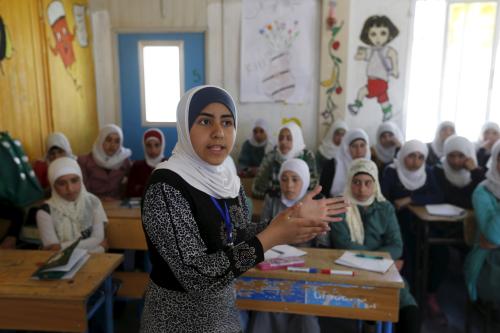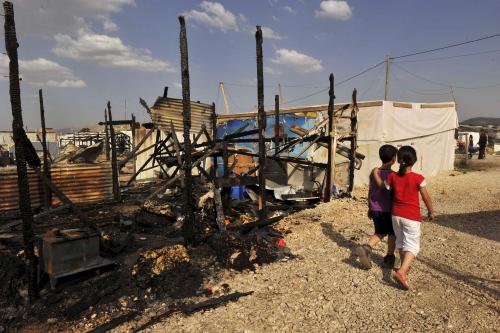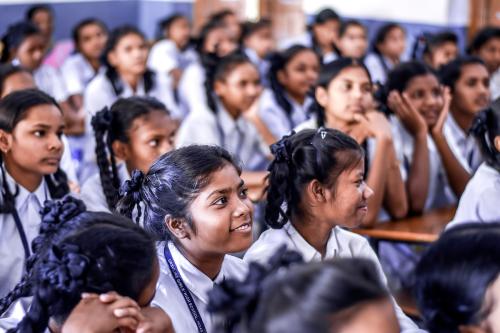The tragedy of the Syrian conflict extends beyond its nearly 500,000 deaths, 2 million injured, and the forced displacement of half its population. The violence and social and cultural forces unleashed by the war have torn families apart, which will likely have a long lasting impact on Syria.
There is universal understanding that the family, as the fundamental unit of society, is entitled to protection as duly enshrined in international law: “It is now recognized, for example, that states have a duty not only to protect, but also to assist, families. Special provisions have been agreed to address the situation of families affected by armed conflict, and those with a member working in a foreign country. There has been, in addition, international confirmation of the equality of men and women as parents, as well as extensive codification of children’s rights, including their right to live with their parents.” There are cultural and religious challenges to this prevailing view, especially when it comes to the role of mothers and fathers and husbands and wives—issues that have surfaced in the context of Syria.
What is clear is that in Syria divorce, polygamy, and child marriages, especially among refugees, have all increased, accompanied by instability and health and psychological consequences. It is difficult to get data on families in rebel occupied areas, including those held by the Islamic State, but it is likely that in these often more conservative areas the same trends are at play. Some of these trends are also seen in countries with large numbers of refugees like Lebanon, Jordan, and Turkey and with Syrians seeking asylum in Europe and elsewhere.
There is consensus that divorces have increased significantly, reportedly up by 100 percent in Damascus in 2013 for example. Others, while recognizing the increase, urge caution with these figures since large population movements make accurate statistics difficult. The reasons for this increase are varied and include tensions around changing roles, unemployment, livelihood issues, long absences by men who go off to war and often bring violence home, couples taking opposing sides on the war, and fragile marriages based on expediency. There are also reports of sharply declining marriage rates, up to a 70-percent drop in Damascus alone.
Polygamy is also on the rise both within Syria and among the forcefully displaced. Polygamous marriages accounted for 30 percent of those registered in Damascus in 2015, up from just five percent in 2010. The reasons include a relative scarcity of men as they go off to fight and are killed, wounded, maimed, or go missing. The fact that polygamy is legal in Syria and all other neighboring countries except Turkey makes it more of an option to consider for women and girls seeking security. Legal measures to provide for some equity among wives are often waved aside by religious authorities.
The presence of marriageable Syrian women, many in dire circumstances, has meant that polygamy has returned to Turkey while increasing in Jordan and Lebanon. In Turkey this has led to an increase in divorces as Turkish wives leave their husbands, and possibly in some degree in Jordan and Lebanon.
In many cases the additional wives are child brides. According to the United Nations, among rural Syrian families where marriage before 18 was already common, girls as young as 13 and 14 are now being married, often to much older men, ostensibly for protection and to safeguard their “honor.” According to CARE’s Isadora Quay: “We have seen a massive increase in child marriage in Syria and Iraq and (…) as far afield as Egypt.” There are health concerns associated with child marriages such as increased child and maternal mortality, increased risk of domestic violence, and reduced access to education and jobs with predictable impact on their children.
What we do know is that Syrian refugee families are under tremendous strain. Just two years ago, women headed over 25 percent of all refugee families—with similar numbers likely for internally displaced people. These numbers are increasing over time. CARE reports that female-headed households in Jordan are now 40 percent of the total. The number in Lebanon is now over 30 percent.
The trek to Europe has also had its challenges as individuals, overwhelmingly men, are sent off for extended stays as anchors to bring the rest of the family, forcing many families to endure separations with a difficult reunification process. Further, women and child brides seeking legal action against unwanted and abusive husbands are challenged by the unfamiliarity of the legal framework and cultural differences in Western society when they arrive.
While the absence of men and the growing number of female-headed households do empower many women, questionable coping mechanisms such as large increases in polygamy and child marriages mean that the pre-2011 Syrian family has undergone significant changes. The country will need to consider these changes as it contemplates recovery and reconstruction. How they are accommodated will play an important role in preparing for eventual reconciliation.






Commentary
The war and Syria’s families
March 22, 2017